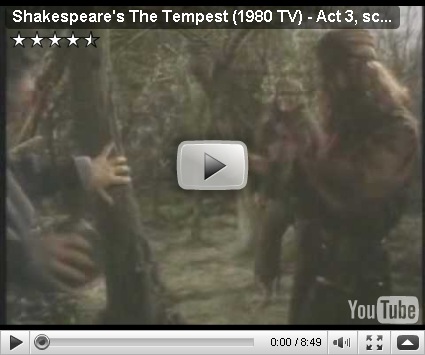At least, when Shakespeare writes it it is.The idea for this post didn’t really strike me until I started talking about The Tempest, but I can see supporting evidence in Playing Shakespeare. Director Barton has just gone through the “Montjoy the herald” speech from Henry V, which is really a giant list of soldiers’ names, and he makes the comment, “It’s almost as if Shakespeare intended each name to stand for five thousand men.”This weekend I was speaking with a director about staging The Tempest, and the power of an opening scene. In particular, whether you can move the shipwreck. As I read it, the idea was reinforced to me that there’s really not much there other than the words. The wreck itself is surely not portrayed on stage. In fact, if I had to reduce the entire wreck down to one line?
We’ve split, we’ve split! Farewell my wife and children!
Shakespeare doesn’t show us a shipwreck, but can’t you hear a shipwreck in that line? I sure can.Or maybe you prefer Macbeth?
For brave Macbeth–well he deserves that name–
Disdaining fortune, with his brandish’d steel,
Which smoked with bloody execution,
Like valour’s minion carved out his passage
Till he faced the slave;
Which ne’er shook hands, nor bade farewell to him,
Till he unseam’d him from the nave to the chaps,
And fix’d his head upon our battlements.
It’s not one line, no, but it sure paints a picture! We haven’t even met Macbeth at this point, but haven’t your expectations been set?My point is to just offer a little nod of acknowledgement and appreciation to the “Shakespeare as literature” way of thinking. There are times, absolutely, when to read the words on a page you’re left scratching your head, and you need an actor to bring them to life. But then there are those picture painting times, no matter how small, when a simple sequence of carefully chosen words can make the image explode upon your brain whenever you like.

